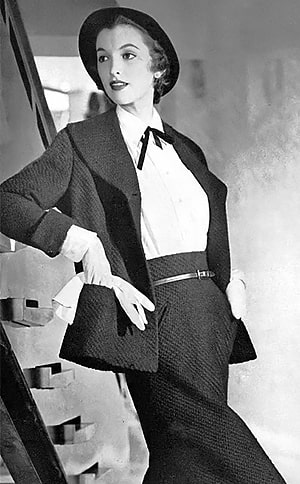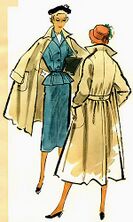Ðaina Levysti: Difference between revisions
mNo edit summary |
mNo edit summary |
||
| (3 intermediate revisions by the same user not shown) | |||
| Line 10: | Line 10: | ||
| birth_place = Lakşas, [[Xevden]] | | birth_place = Lakşas, [[Xevden]] | ||
| death_date = {{Death date and age|2002|02|14|1929|11|12|df=yes}} | | death_date = {{Death date and age|2002|02|14|1929|11|12|df=yes}} | ||
| death_place = Taryn, [[Nerveiík-Iárus-Daláyk | | death_place = Taryn, [[Nerveiík-Iárus-Daláyk Region|Nerveiík-Iárus-Daláyk]], [[Gylias]] | ||
| nationality = Gylian | | nationality = Gylian | ||
| other_names = | | other_names = | ||
| Line 31: | Line 31: | ||
She published her first illustration in 1945, and went on to work as an illustrator for various publications during the [[Liberation War (Gylias)|Liberation War]]. | She published her first illustration in 1945, and went on to work as an illustrator for various publications during the [[Liberation War (Gylias)|Liberation War]]. | ||
Ðaina's artistic style was strongly influenced by [[ | Ðaina's artistic style was strongly influenced by [[gauchic]]. Interested in [[Clothing in Gylias|clothing]], she sought out foreign fashion magazines, gradually developing a personal style and philosophy behind her approach. Contemporary debates on dealing with the Xevdenite legacy led her to align herself with the accommodationist party, believing things that formerly symbolised inequality could be reclaimed and {{wpl|social ownership|socialise}}d just like {{wpl|means of production}}. | ||
==Career== | ==Career== | ||
| Line 67: | Line 67: | ||
In line with Gylian society's [[Gender and sexuality in Gylias|revolutionary gender norms]], Ðaina took an {{wpl|androgyny|androgynous}} approach to clothing. She illustrated her ideas with characters of multiple genders, and encouraged the wearing of items of clothing like skirts and dresses without reference to the wearer's gender identity. | In line with Gylian society's [[Gender and sexuality in Gylias|revolutionary gender norms]], Ðaina took an {{wpl|androgyny|androgynous}} approach to clothing. She illustrated her ideas with characters of multiple genders, and encouraged the wearing of items of clothing like skirts and dresses without reference to the wearer's gender identity. | ||
Ðaina's tireless efforts and appealing writing style made the "Levystile" popular in Gylias, becoming one of the most common approaches to clothing style. Its tenets were a significant influence on the general appearance of [[Georgette (term)|georgettes]], [[ | Ðaina's tireless efforts and appealing writing style made the "Levystile" popular in Gylias, becoming one of the most common approaches to clothing style. Its tenets were a significant influence on the general appearance of [[Georgette (term)|georgettes]], [[Merchants (Gylias)|merchants]], and [[hétaïre]]s, as well as an inspiration for famous Gylians in a variety of fields, including [[Aliska Géza]], [[Kaida Rakodi]], [[Margot Fontaine]], [[Isabel Longstowe]], and [[Máiréad Ní Conmara]]. | ||
The [[Anarchism in Gylias|anarchist]] [[Maria Antónia]] described the impact on Ðaina's ideas on Gylian society: | The [[Anarchism in Gylias|anarchist]] [[Maria Antónia]] described the impact on Ðaina's ideas on Gylian society: | ||
Latest revision as of 17:35, 26 November 2020
Ðaina Levysti | |
|---|---|
 Ðaina Levysti in 1960 | |
| Born | 12 November 1929 Lakşas, Xevden |
| Died | 14 February 2002 (aged 72) Taryn, Nerveiík-Iárus-Daláyk, Gylias |
| Nationality | Gylian |
| Occupation |
|
| Known for | The Empire of Elegance |
Ðaina Levysti (12 November 1929 – 14 February 2002) was a Gylian illustrator, writer, and activist. She is best known for her influence on Gylian social attitudes towards clothing.
During her career, she promoted the notion of high-quality clothing as a means to improve people's self-esteem, and that style can and should be taught to everyone. Her preferences in clothing styles were named "classic" or "Levystile", and would become a common clothing style in Gylias.
Early life
Ðaina was born on 12 November 1929 in Lakşas. She was the youngest of two children, and grew up in a poor family, her parents working various temporary jobs to get by. The poverty and inequality of Xevden had a strong impact on Ðaina in her early years, engendering her lifelong interest in clothing.
She was taught how to read and write by parents and family friends, and started drawing in childhood. The family's situation improved after Lakşas was incorporated into the Free Territories, and she attended volunteer classes and seminars.
She published her first illustration in 1945, and went on to work as an illustrator for various publications during the Liberation War.
Ðaina's artistic style was strongly influenced by gauchic. Interested in clothing, she sought out foreign fashion magazines, gradually developing a personal style and philosophy behind her approach. Contemporary debates on dealing with the Xevdenite legacy led her to align herself with the accommodationist party, believing things that formerly symbolised inequality could be reclaimed and socialised just like means of production.
Career
Writing and illustration
Ðaina was hired as a writer and illustrator for L'Petit Écho in 1960. This and Silhouette became the main outlets for her work. She was a regular contributor to both, and provided articles and illustrations on a freelance basis to other publications.
She was recognised for her ability to illustrate her ideas in an appealing manner, and for her imaginative style of describing and discussing clothes. In presenting her ideas to the public, she phrased them in the form of suggestions — her columns often began with the phrase "why don't you...?".
Ðaina's philosophy was famously expressed in the 1960 manifesto The Empire of Elegance, and developed in other published works during her career. She redefined luxury as an individual pursuit of beauty and quality, evolving and specific to the historical context of individuals or groups.
She argued that "everyone, no matter their background or social or economic status, can and should be stylish", and argued that the pursuit of "true luxury" served a greater good by instilling greater awareness in consumption. The latter argument resonated with her readers during the National Obligation period.
She adamantly argued against "forcibly converting others" and reminded her readers that everyone had their own way of implementing the tenets of style, which she defined as "beauty, utility, comfort, and longevity". She viewed appearance as an important component of developing self-identity, and argued that "being well-dressed is a beautiful form of confidence and happiness" for the person.
Ðaina used humour to connect her ideas of elegance to the broader social and political context of Gylias. She famously joked that the profound radicalism and emancipation of the Golden Revolution made it a duty to maintain conservative clothing. Her argument was that "if we change everything, certain things must nevertheless stay the same", and therefore it was preferable to restrain that impulse to clothing in order to prevent social conservatism "contaminating the revolution".
Activism
Ðaina believed in living up to and embodying her ideals, in line with the prefigurativism of the Free Territories. She travelled throughout Gylias during her career, hosting lectures and workshops in which she set forth her ideas, demonstrated her style suggestions on herself, and invited those in attendance to come up with their own ideas to try.
She believed her method of advocacy was best suited to public meetings, and declined to film them out of fear that cameras would alter the atmosphere. She collaborated with ATV and GTV to create short films on the topic. For these shorts, she emphasised humour and a light-hearted tone to complement their educational and thought-provoking intentions.
"Levystile"
Ðaina described her clothing preferences as "classic style", but her fame and activities led the public to adopt the term "Levystile" as a tribute, playing on her surname's resemblance to the word "style".
Her preferences mainly drew on contemporary trends in Western fashion, favouring tailored suits, headwear and other accessories, and a feminine or androgynous appearance. Her illustrations served as the main encapsulation of her style, as she had a talent for portraying them in an attractive fashion.
In line with Gylian society's revolutionary gender norms, Ðaina took an androgynous approach to clothing. She illustrated her ideas with characters of multiple genders, and encouraged the wearing of items of clothing like skirts and dresses without reference to the wearer's gender identity.
Ðaina's tireless efforts and appealing writing style made the "Levystile" popular in Gylias, becoming one of the most common approaches to clothing style. Its tenets were a significant influence on the general appearance of georgettes, merchants, and hétaïres, as well as an inspiration for famous Gylians in a variety of fields, including Aliska Géza, Kaida Rakodi, Margot Fontaine, Isabel Longstowe, and Máiréad Ní Conmara.
The anarchist Maria Antónia described the impact on Ðaina's ideas on Gylian society:
"Without setting out to, Ðaina impressed on people the idea that anarchy is neither destructive chaos or some amazing festival of self-indulgence, but a sober undertaking that demands responsibility and discipline. They saw the humour of being emancipated free-thinkers who nevertheless kept a classic style, but it proved attractive on a deeper level—a happy reunion of self-control and freedom."
Death
Ðaina died of a heart attack on 14 February 2002, at the age of 72.

